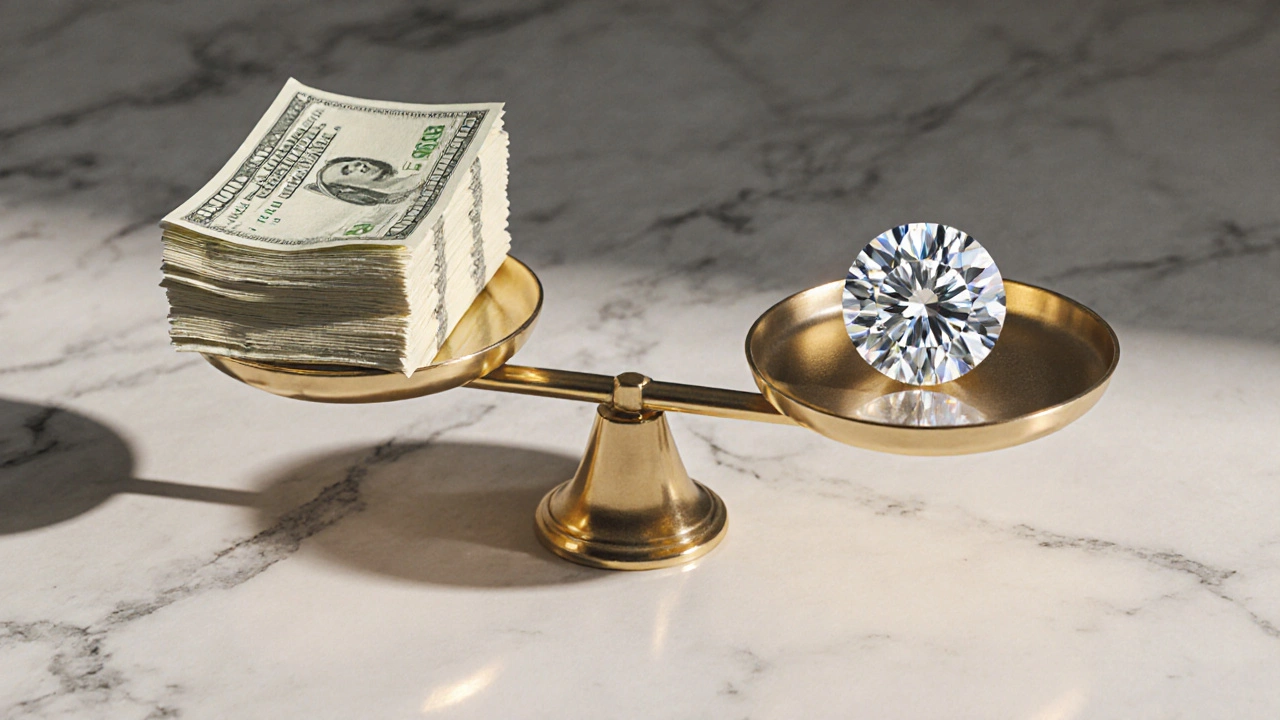Diamond Carat Price: What You Need to Know
When you start looking at diamond carat price, the cost you pay for each carat of a diamond, measured by its weight and quality. Also known as price per carat, it serves as the baseline for budgeting a wedding ring or any fine jewelry purchase. Understanding this figure helps you compare stones, negotiate with sellers, and avoid overpaying.
What Influences a Diamond’s Carat Price
The diamond cut, the proportions and finish of a stone that affect sparkle and perceived size. Also known as cut grade, it can add up to 30% to the final price. A well‑executed cut makes a diamond appear larger than its actual carat weight, so buyers often pay more for excellent or ideal cuts.
Next comes diamond clarity, the level of internal or external imperfections, called inclusions and blemishes. Also called clarity grade, clarity directly impacts price per carat; a VS1 stone commands a higher price than a SI2 of the same weight. Even small differences in clarity can shift the cost curve, especially beyond the 1‑carat mark.
diamond color, the absence of color in a stone, graded from D (colorless) to Z (light yellow). Also referred to as color grade, the whiter the diamond, the steeper the price per carat climbs. Color interacts with cut and clarity, forming a price triangle that buyers need to balance.
Beyond the classic 4Cs, diamond certification, an independent grading report from labs like GIA or IGI. Also known as grading report, certification validates the claimed carat weight and quality, protecting you from inflated diamond carat price claims. Stones without reputable certificates often sell for less, but they also carry higher risk.
Finally, the market split between natural diamonds, diamonds mined from the earth, with unique formation histories. Also called mined diamonds, they typically hold higher per‑carat prices due to rarity. In contrast, lab‑grown diamonds, diamonds created in a lab using HPHT or CVD technology. Also known as synthetic diamonds, they offer the same 4C qualities but at 30‑40% lower carat prices, reshaping the pricing landscape.
All these factors weave together into the final diamond carat price. Knowing how each element adds or subtracts value lets you set a realistic budget and target the right stone for your jewelry piece.
Below you’ll find a curated collection of articles that dive deeper into budgeting for weddings, negotiating with vendors, and choosing the perfect accessories—all of which intersect with understanding diamond pricing. Explore the insights, compare real‑world examples, and start planning your dream look with confidence.

- Oct, 21 2025
- Comments 0